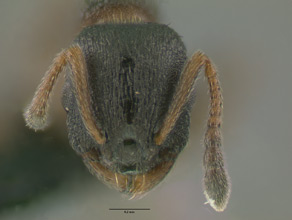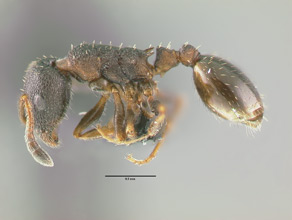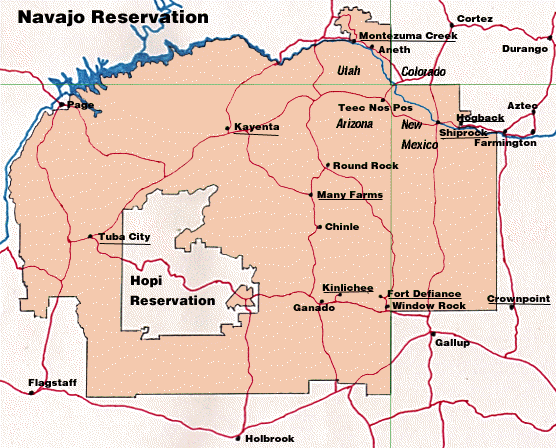- Identification
- Small dark colored workers (black, dark brown or dark red) with 11 segmented antenna. The propodeum bears a pair of spines at the angle between its upper and declivitous faces. This species name subsumes a few, and perhaps many, possible North American Leptothoraxspecies. Individuals are small but different forms are able to be classed into "small" or "large" morphs (Heinze 1989), with distinctive populations also showing some consistency in their dominate color (e.g. large black workers or small brown workers).
- Biology
- In North America Leptothorax muscorum is found in dryer coniferous forest habitats with scarce undergrowth and in open mountain meadows . Nests are built under small stones, under bark, in rotten wood and occasionally in the litter.
- additional biology notes...
- Distribution
- Range
- Canada, United States, Eurasia. The boreal zone of the Holarctic (in general, more southern parts than L. acervorum), mountains of Southern Europe, the Caucasus; in the Eastern Palaearctic it reaches south to Central Sakhalin (appr. 50° N); absent from Japan and Korean Peninsula (Radchenko 2004).
- Navajo Reservation Records
- Samples being processed.
- Additional Notes
- Colonies are small, typically less than 100 workers, and may contain one or many queens. Polydomy may also be practiced and what appear to be whole nests (the discovery of a queen, workers and brood within a distinctive nest chamber) may only be part of a series of nesting chambers.
- Leptothorax ants will readily move their nesting location. Moglich (1978) showed that this process begins with a number of individual scout workers recruiting individual coworkers to visit a new nesting site via tandem running. If the new nesting location is amenable to enough recruited workers the process then shifts to a more intensive emigration. Workers stop using tandem running and begin carrying individual nestmates, brood and queens to the new nest location.
- Etymology
- Ecological. Referring to moss, which this species is ironically less likely to be found nesting in than it co-gener acervorum.
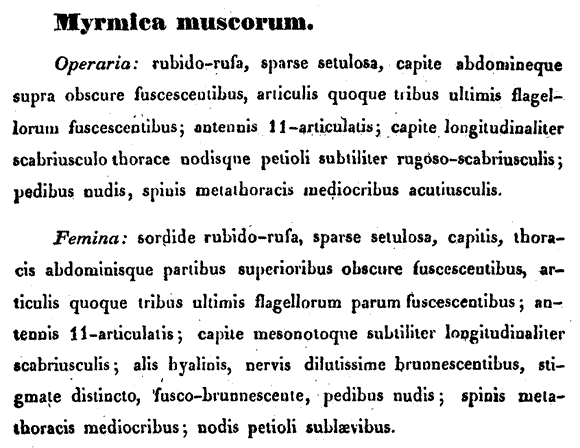
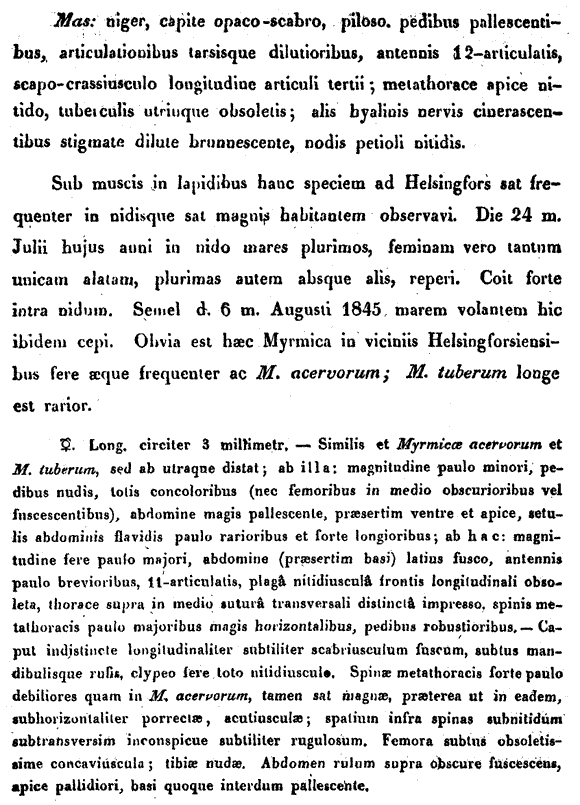
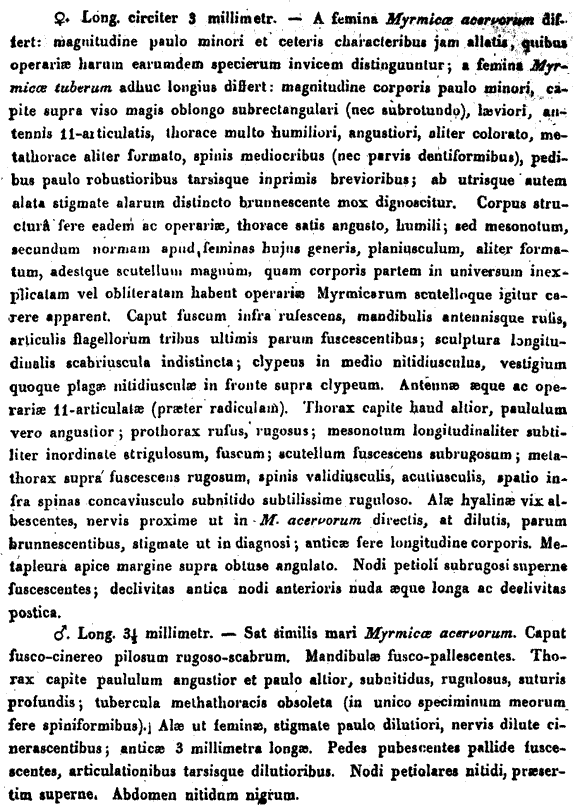
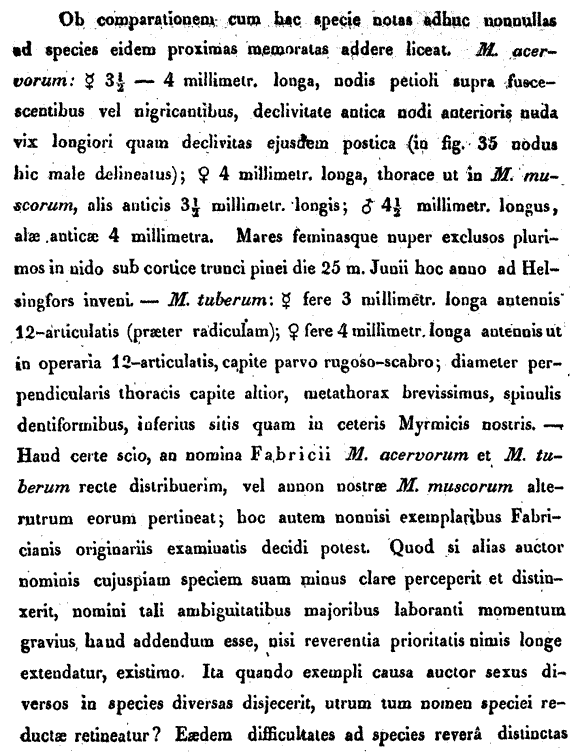

- Literature
- Heinze, J. 1989. A biochemical approach toward the systematics of the Leptothorax "muscorum" group in North America (Hymenoptera: Formicidae). Biochemical Systematics and Ecology. 17:595-601.
- Möglich, M. 1978. Social organization of nest emigration in Leptothorax (Hym., Form.). Insectes Sociaux. 25:205-225.
- Radchenko, A. G. 2004. A review of the ant genera Leptothorax Mayr and Temnothorax Mayr (Hymenoptera, Formicidae) of the Eastern Palaearctic. Acta Zoologica Academiae Scientiarum Hungaricae. 50:109-137.
Page authored by David Lubertazzi and Gary Alpert
